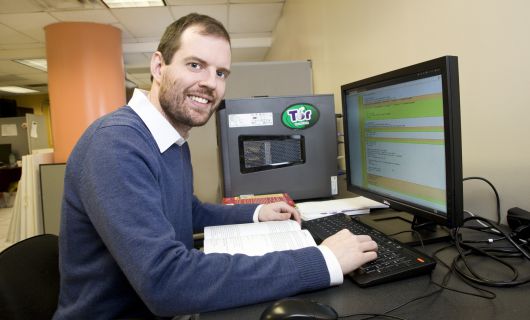Prof. Justin Cappos joins the Ranks of the ‘Brilliant 10’

Source: NYU.edu
Prof. Justin Cappos joins an elite group of ten young researchers named by Popular Science magazine as this year’s “Brilliant 10.” For the past 12 years, Popular Science has been searching out the nation’s most promising researchers under age 40 and profiling them in the magazine’s annual “Brilliant 10” issue, on newsstands now and at popsci.com.
Cappos, an assistant professor of computer science and engineering, was recognized primarily for his work on Seattle, a free, open-source cloud computing system that allows anyone to experience the Internet from the perspective of any location around the globe. Although some users employ Seattle for content distribution or to circumvent censorship, it also provides a safe platform for students to experiment with cybersecurity, mobile devices, and the web. A dozen universities around the world have already use Seattle in 45 classes, mainly to study networking and cybersecurity.
Seattle permits access to resources that exist on any network, anywhere—it presents the Internet, not as a specific ISP or government would have users experience it, but as it exists in any location in the world. For example, a student in China whose access is restricted may use Seattle to circumvent censorship and see the same Internet that a student in Brooklyn would see, in real time.
“This isn’t a method of hacking into someone’s computer and controlling it,” explained Cappos, whose computer security background was essential in ensuring the safety of the system. “Instead, Seattle lets users see the Internet as if they were sitting at someone else’s computer.”
Seattle also runs on smartphones, and its capabilities shine light into what is currently a blind field. “Nobody knows what goes on inside the roughly 1 billion smartphones in the world, or what the Internet would look like from, for example, an Android phone in Afghanistan,” said Cappos. Seattle can answer these questions, and is the largest academic research testbed of its kind. It receives funding from the National Science Foundation (NSF).

 2025 Brooklyn 6G Summit — November 5-7
2025 Brooklyn 6G Summit — November 5-7 Sundeep Rangan & Team Receive NTIA Award
Sundeep Rangan & Team Receive NTIA Award 2025 Open House
2025 Open House








